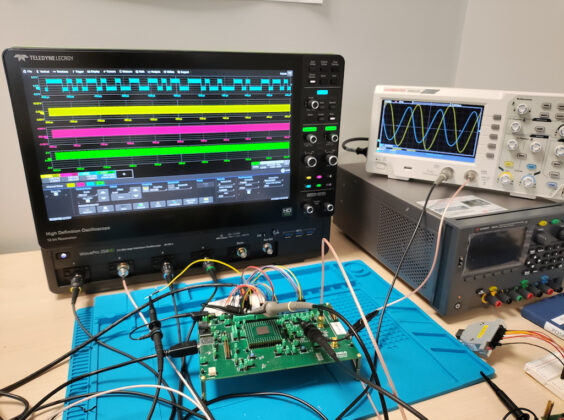(Full video not showing? view it here)
With the release of the first three NIST PQC standards, the world of post-quantum cryptography (PQC) is rapidly shifting from a focus on preparation, to a much sharper focus on compliance.
“For the first time, everyone has to look at how they adopt,” explains Graeme Hickey, PQShield’s VP, Engineering. “It’s no longer a PoC or a research item; it’s now something that’s a must-do, and I think we’re going to see an increase in interest from industry and companies looking to work out how to solve the post-quantum problem.”
Many of these first adopters will of course be at the root of the supply chain, such as semiconductor manufacturers who provide the boards and systems other companies rely on. Having PQC in these components is critical for the rest of the supply chain, and it’s clear already from many of our customers in this sector that the quantum shift – from preparation to compliance – is already on.
That’s one of the reasons why PQShield are excited to announce that we’ve designed and built our own fully functional PQC silicon test chip.
We think it’s the first ever PQC-compliant silicon chip, and it’s fully loaded with all the power of our PQPlatform IP, specifically focused on platform security for SoC semiconductor vendors with implementation security in mind. These are linked below:
By building our own ASIC, we can now demonstrate and test the IP in the way that a customer will use it. We’re able to evaluate its operation in real detail, looking at how to be compliant against the standards, and perform security testing in a way that would be practically difficult on a customer product deployed in the field.

In addition, the test chip gives us the ability to deep-dive into areas like power utilization, performance, and critically, the efficiency of Side Channel Analysis (SCA) countermeasures. As Graeme explains:
“It’s much easier to do this type of evaluation on a real product, as opposed to a pre-silicon simulation, or using FGPA, and it’s far more reflective of what a final product would look like.”
Another benefit is the test chip’s flexibility. The chip itself is a hardware/software co-design IP, and it allows us to update the firmware directly in order to modify the algorithms it supports. That means that it can be configured to be more standards-compliant in future, or perhaps even more secure from side-channel attack as analysis continues. The test chip has completely programmable firmware – a feature that will certainly be useful as NIST standardization continues, especially with the outstanding Round 4 KEMs, as well the on-ramp for new, wider digital signature schemes, such as our own side-channel secure, masking-friendly RACCOON scheme.
RACCOON has been specifically included in our silicon and this is likely to be the first time there has ever been an implementation in silicon that can actually be tested.
As the quantum shift continues, the focus on compliance with the NIST standards will sharpen, particularly as industry regulation follows. Our engineering and research teams have worked hard to ensure that PQShield has a tool that can allow us to test, evaluate and configure real-world post-quantum cryptography, keeping us all one step ahead of the quantum threat.
Review our products and talk to us about your own silicon needs for PQC.
(Full video not showing? view it here)
